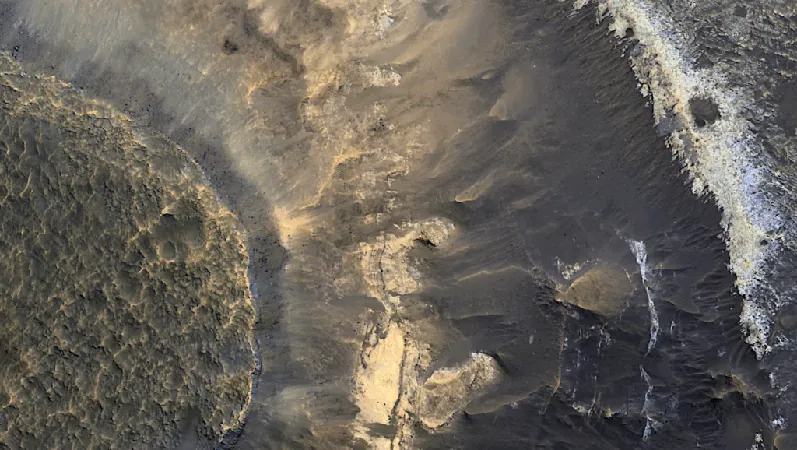
Ancient Life on Mars? Thick Clay Layers Suggest a Wet and Stable Environment
2025-06-18
Author: Nur
The Clue in Clay: What Mars' Layers Reveal
Mars, the enigmatic Red Planet, holds a treasure trove of thick clay layers—some stretching hundreds of feet—that have intrigued scientists for years. These clay formations are significant because they can only develop in the presence of water, raising hopes for discovering signs of ancient life.
New Insights from Nature Astronomy
In a groundbreaking study published in Nature Astronomy, researchers from The University of Texas at Austin have delved deeper into these clay terrains. Their findings reveal that most of these clays originated near ancient standing bodies of water, which were prevalent on Mars billions of years ago.
The study suggests that these stable environments, characterized by low elevations and minimal physical disruption, could have been ideal for the chemical weathering processes necessary for clay formation. Lead author Rhianna Moore explains, “Stable terrain means these potentially habitable environments could exist for extended periods.”
A Window into Mars' Wetter Past
Long ago, Mars was a vibrant world dotted with lakes and rivers, with geological formations that tell tales of this wet epoch. This research uncovers how the surrounding terrain influenced the development of thick clay layers during this time.
By analyzing images and data from over 150 clay deposits discovered by NASA's Mars Reconnaissance Orbiter, Moore identified that these clays were primarily found in low-lying regions adjacent to ancient lake deposits. Such conditions would have favored their preservation over time, mirroring Earth’s humid regions where thick clay layers are commonly formed.
Understanding Ancient Mars' Climate Dynamics
The clays also provide insights into Mars' ancient climate dynamics. Unlike Earth, where tectonic activity constantly exposes new rock, Mars has been relatively geologically dormant. This lack of tectonic movement means that when volcanic eruptions released CO2, it would remain trapped, potentially warming the planet and creating watery conditions conducive to clay formation.
Interestingly, this stagnation may have also limited the formation of carbonate rocks—commonly formed under Earth-like conditions—by preventing necessary chemical reactions. Moore posits, "This could be one of several factors contributing to the puzzling absence of predicted carbonates on Mars."
A Fascinating Future Awaits
Funded by NASA and the Canadian Institute for Advanced Research, this research opens new avenues for understanding Mars' potential for life. The striking combination of ancient clays and their stable environments paints a picture of a planet that once held conditions amenable to life.
As researchers continue to uncover Mars’ secrets, we are left hopeful about the possibilities that lie beneath its dusty surface—could there indeed be remnants of ancient life waiting to be discovered?


 Brasil (PT)
Brasil (PT)
 Canada (EN)
Canada (EN)
 Chile (ES)
Chile (ES)
 Česko (CS)
Česko (CS)
 대한민국 (KO)
대한민국 (KO)
 España (ES)
España (ES)
 France (FR)
France (FR)
 Hong Kong (EN)
Hong Kong (EN)
 Italia (IT)
Italia (IT)
 日本 (JA)
日本 (JA)
 Magyarország (HU)
Magyarország (HU)
 Norge (NO)
Norge (NO)
 Polska (PL)
Polska (PL)
 Schweiz (DE)
Schweiz (DE)
 Singapore (EN)
Singapore (EN)
 Sverige (SV)
Sverige (SV)
 Suomi (FI)
Suomi (FI)
 Türkiye (TR)
Türkiye (TR)
 الإمارات العربية المتحدة (AR)
الإمارات العربية المتحدة (AR)